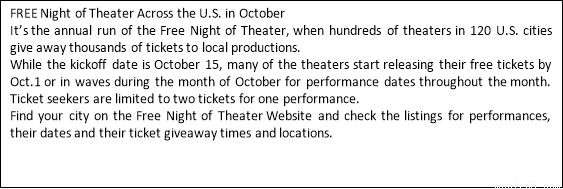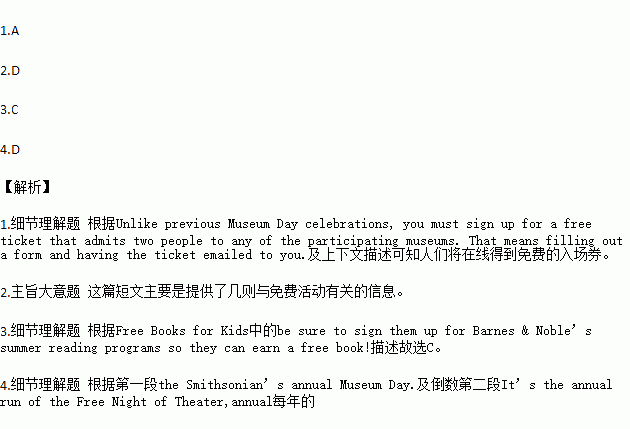题目内容
C
Free Fun Guides



1.What is new about this year’s Museum Day?
A. People will get free tickets online.
B. Two museums offer free admission.
C. People must buy tickets for visiting a museum.
D. People can visit museums online and get a small gift.
2.The main purpose of the passage is to___________.
A. introduce ways to save money
B. help people who are very poor
C. give guidance on how to have some fun
D. provide information about free things to do
3.How can kids get a free book?
A. By reading eighty books at any Barnes & Noble.
B. By downloading and printing out a passport before October.
C. By signing up for a summer reading program and choosing one of the books they have read.
D. By signing up for a winter reading program and make a list of the books.
4.Which of the following shows the similarity between Museum Day and Free Night of Theater?
A. They last for the same length of time
B. The same number of free tickets is given away.
C. The tickets can be used in any U.S. city
D. They take place once a year.
 阅读快车系列答案
阅读快车系列答案
